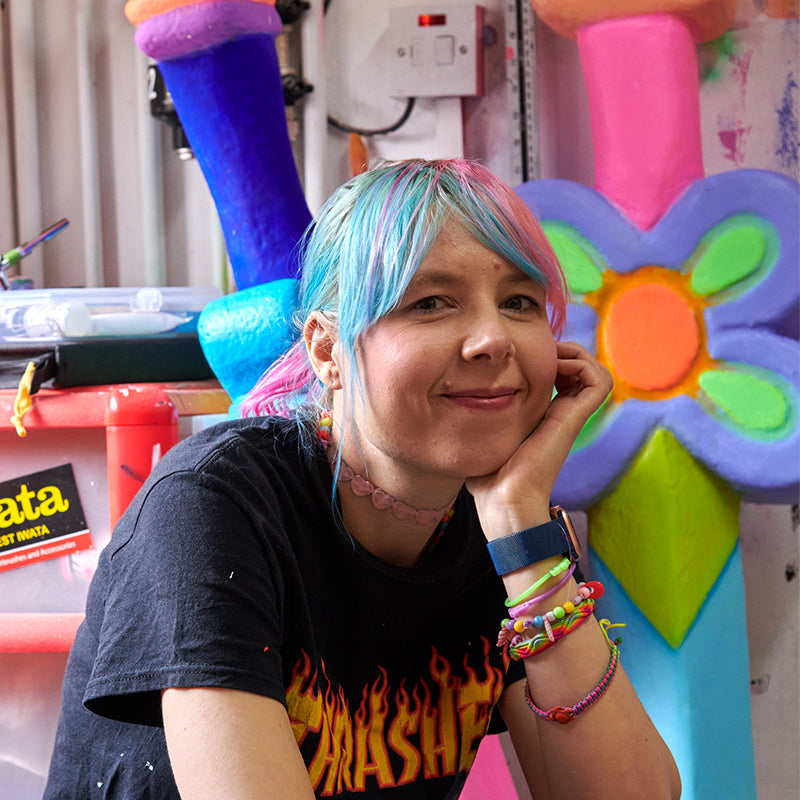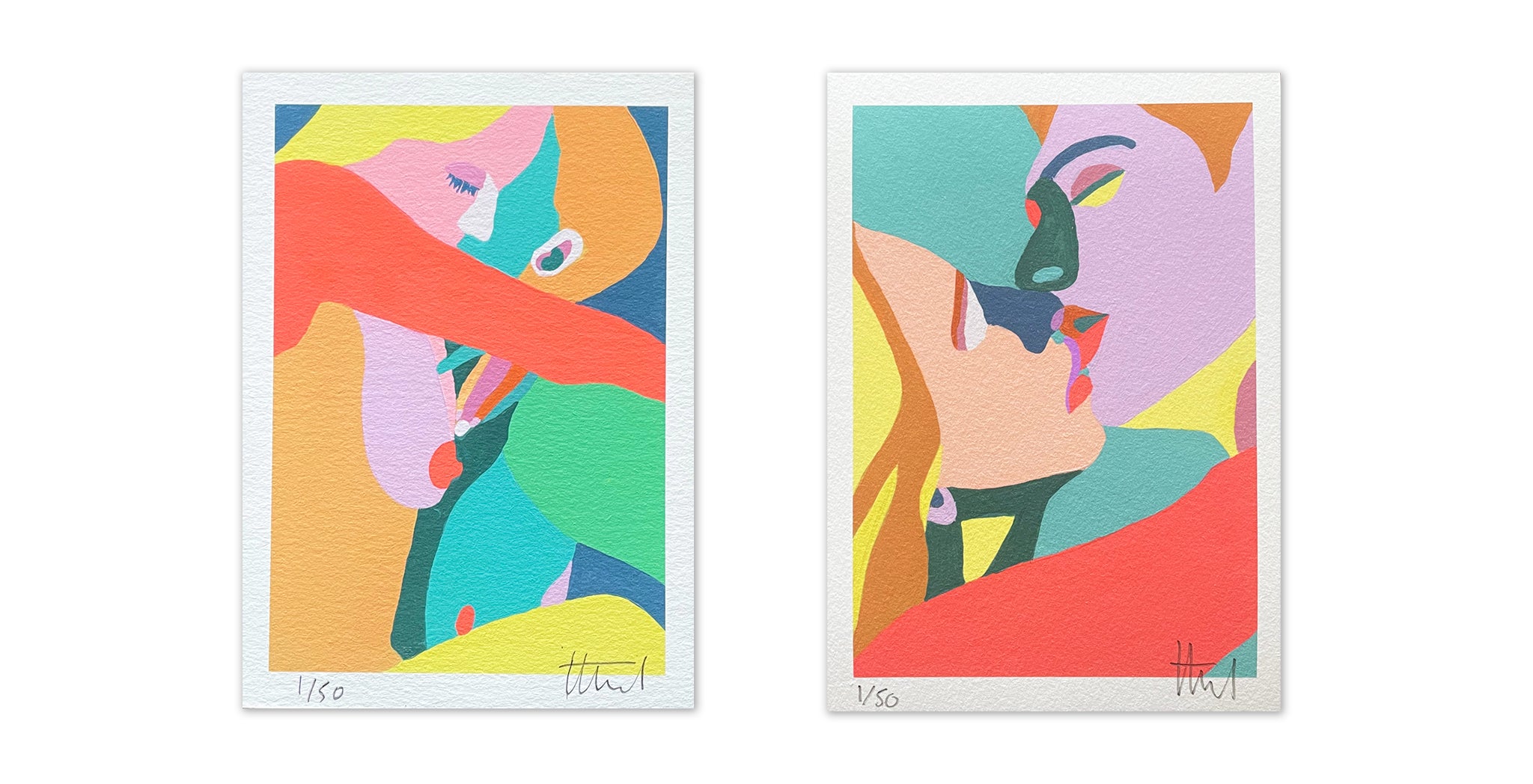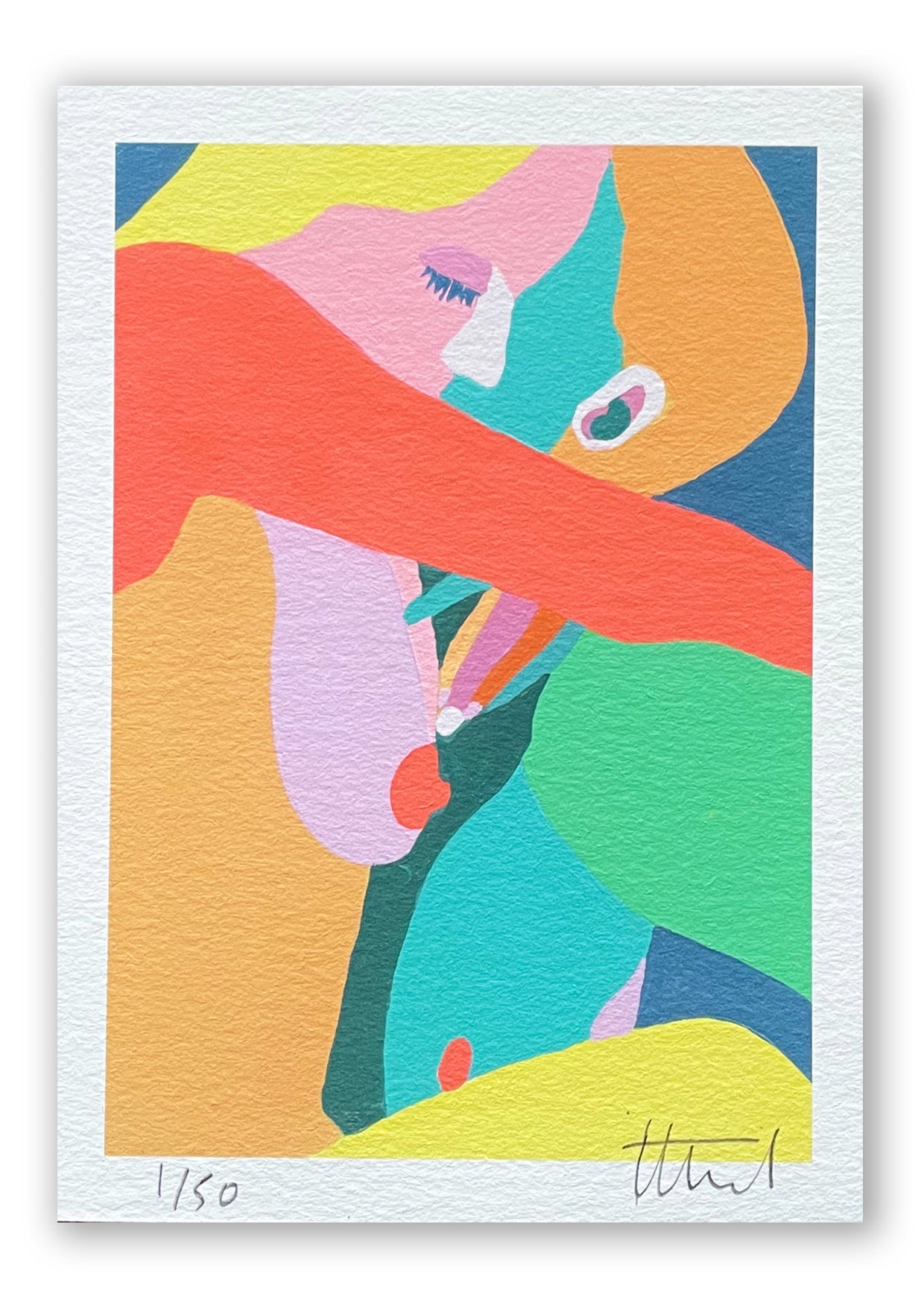
Untitled
Available as a run of 50 limited limited edition 6x4 print
I particularly love the large, bold, bright yet minimal oil paintings of Jessica Wilson. Her work, which explores the potentials of form and colour, is often categorised as ‘abstract’ which she as an artist disputes. She states her paintings come from life, they are translations of things seen in the world. It is true that even an ‘abstract’ picture has to start as an ideology, the idea behind an image has to come from somewhere, a visual inspiration. A dialogue is consequently developed between image and idea.

Where Did Dolly Go (small)
Available as a run of 50 limited limited edition 6x4 prints
Drawing is a necessary tool for painters and is central to Wilson’s practice. Her images begin with a series of line drawings, which mediate between the world and her studio, capturing seen things and ideas in order to subsequently transform them through the aesthetic execution of painting. Her drawings are an essence of something half remembered, a moment caught, an approximation. She generates inspiration from the negatives spaces between two objects, the texture of a fabric, or the patterns in weather or traffic. Ideas and line drawings are continuously dissected, reworked and invented, until the original memory blurs into a drawing with a life of its own. The image is therefore removed enough from the original idea or memory to make it unique and ‘abstract’, but still having come from somewhere initially.

Untitled
Available as a run of 50 limited limited edition 6x4 prints
Her paintings are also inscribed with art historical references, subtly associating the works of other 20th century painters through her work in hope to trigger the viewers’ personal recollections. Wilson’s work can be seen to be influenced and reference the works of Raoul de Keyser, Ellsworth Kelly, Mary Heilmann, and Blinky Palermo.

Untitled
Available as a run of 50 limited limited edition 6x4 prints
What I find fascinating about Wilson’s work is that displayed in various sequences, her paintings build a visual conversation among one another. This is a result of the way her practice centers around visual language, and that she works on many pieces at once on her studio walls. Constantly shifting and reordering the placement of her canvases in her studio, bouncing her imagination from one to the next, she creates an evolving story and a set of possibilities. Therefore her works should not be viewed singularly, it is much more interesting for the viewer to encounter them in a pair or sequence as together they form a conversation and an investigation into visual language through painting.
About the writer
 |
Tara is an Art Foundation and History of Art graduate born and bred in London. She has travelled the globe extensively, immersing herself in the vibrant arts and cultures the world has to offer, and hopes her next adventure will take her to India! She is currently teaching English as a foreign language whilst enjoying volunteering at Art on a Postcard, and she hopes to break into the art world! |


















